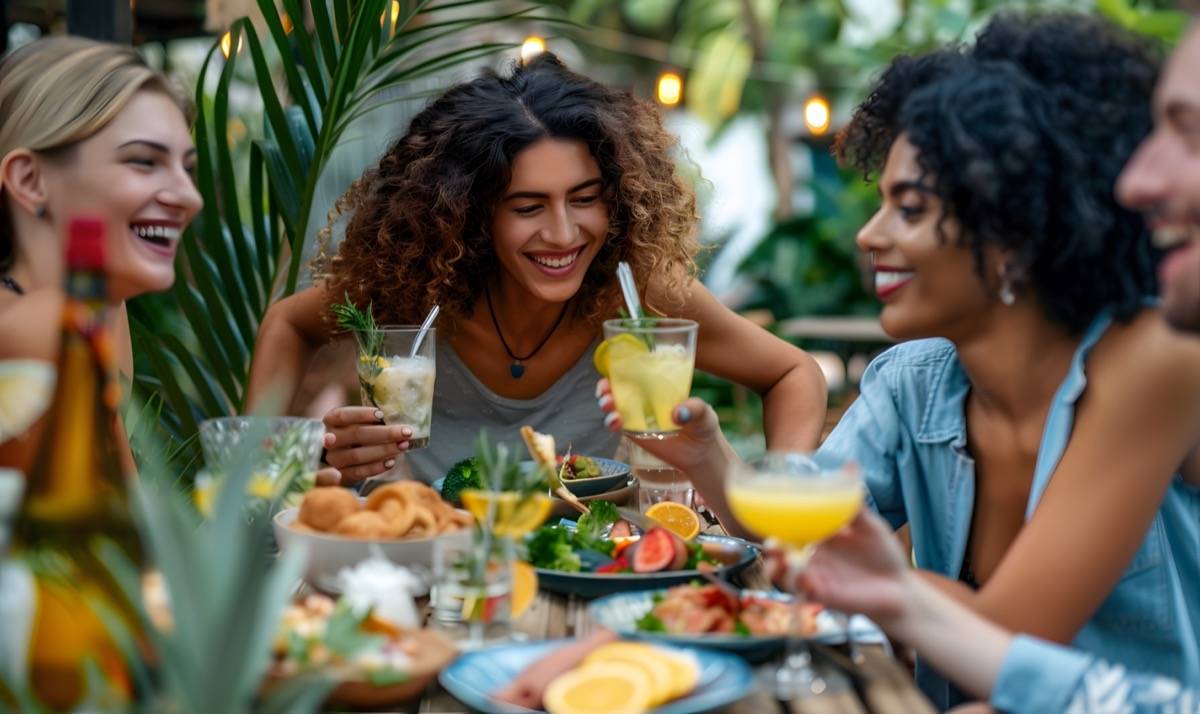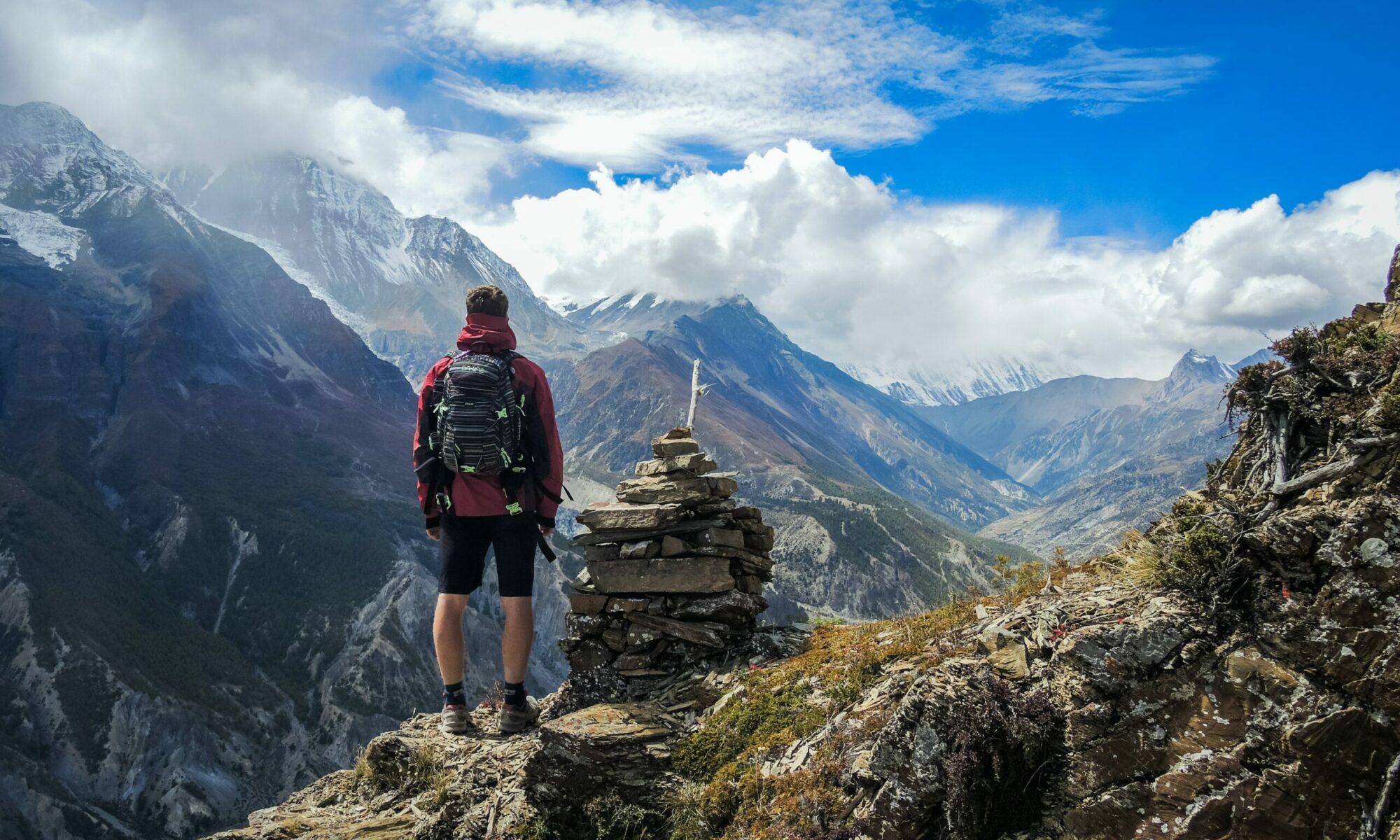Discover the vibrant flavors and fascinating history of Caribbean cuisine and embark on a culinary journey through the diverse cultures and tastes that define the Caribbean!
When you think of Caribbean food, what flavors come to mind? Perhaps the bright colors of roasted plantains, the rich, aromatic spices of jerk chicken, or the refreshing taste of coconut water. The Caribbean culinary scene is a tapestry of unique flavors and cultural influences, blending traditions and ingredients from Africa, Europe, and the Americas. Each dish tells its own story, offering a taste of a diverse heritage that spans generations.
Explore with us as we dive into the distinct flavors, essential spices, and iconic dishes that make Caribbean cuisine truly special. From traditional recipes to modern twists on classic meals, this journey will uncover the layers of Caribbean cuisine that make it a favorite around the world. Join us to experience the flavors that bring the Caribbean to life.
The Cultural Mosaic of the Caribbean
The Caribbean is often described as a melting pot of cultures. Over the centuries, various peoples—including the Indigenous Tainos and Arawaks, European colonizers, enslaved Africans, Asian laborers, and more—have influenced its culinary practices.
The Indigenous Influence
The original inhabitants of the Caribbean laid the groundwork for many culinary practices. They farmed cassava, sweet potatoes, and maize, creating staple foods that remain central in the region today. For instance, cassava flour, derived from the tuber of the cassava plant, is a key ingredient in many Caribbean dishes, including arepas and cassava bread.
European Colonization
As European nations colonized the Caribbean, they brought their own ingredients and culinary techniques. Spanish, French, and British influence is evident in various cooking methods and flavor profiles. Dishes such as the French bouillabaisse evolved into local seafood soups, while British influences can be seen in the preparation of meats and the incorporation of baking into Caribbean cuisine.

African Heritage
The arrival of enslaved Africans introduced a wealth of flavors and cooking methods. Techniques like marinating meats with spices and slow-cooking are hallmarks of African culinary traditions. As a result, the use of spices such as scotch bonnet peppers, allspice, and thyme characterizes many Caribbean dishes today.
Asian Influences
In the 19th and 20th centuries, laborers from China and India joined the workforce in the Caribbean, bringing their culinary traditions with them. This fusion can be seen in dishes like curry goat and fried rice, which incorporate both local ingredients and traditional Asian cooking techniques.
The Resulting Synthesis
The result of these diverse influences is a dynamic culinary landscape. Caribbean food is characterized by its bold flavors, colorful presentation, and a unique ability to blend sweetness, heat, and earthiness. Whether it’s rice and peas, fried plantains, or escovitch fish, each dish represents an intersection of stories and cultural heritage.
Iconic Caribbean Dishes
While the Caribbean boasts a plethora of culinary offerings, a few dishes stand out as icons that encapsulate the spirit and history of the region.
Jerk Chicken
Arguably one of the most recognized Caribbean dishes, jerk chicken originated in Jamaica. This method of cooking involves marinating chicken in a spicy mixture that includes scotch bonnet peppers, allspice, and a variety of other herbs and spices before grilling it over pimento wood. The combination of flavors creates an unforgettable smoky and spicy taste that is synonymous with Caribbean barbecues.
Rice and Peas
Contrary to its name, rice and peas are primarily made with rice and kidney beans (or pigeon peas, depending on the island). Traditionally served as a side dish to many Caribbean meals, it is cooked in coconut milk with scallions, thyme, and sometimes a hint of pepper for an added kick. This dish is not just a staple; it’s a cultural symbol that highlights the agricultural bounty of the region.
Callaloo
Callaloo is often referred to as the Caribbean’s signature leafy green vegetable. It can be sautéed, used in soups, or served as a side dish. Made from dasheen leaves (similar to spinach) and typically cooked with tomatoes, onions, and spices, callaloo reflects the local farming practices and the importance of greens in the diet.
Roti
Roti, often associated with Trinidadian cuisine, is a type of flatbread influenced by Indian cooking. Traditionally served with curried meats, potatoes, or vegetables, roti has become a popular dish across the Caribbean. The method of making roti highlights the influence of Indian cooking techniques, particularly the importance of bread in the diet.
Pigeon Pea Soup
Pigeon pea soup is a comforting dish often made with yellow split peas, vegetables, and spices. This hearty soup varies across the Caribbean, with each nation putting its own spin on the recipe, showcasing local ingredients and cooking styles. It serves as a delicious reminder of the region’s agricultural diversity.
The Role of Local Ingredients
Central to Caribbean cooking is an array of local ingredients that reflect the island’s rich resources. Understanding how these ingredients shape Caribbean curries, stews, and desserts can enhance your appreciation for the cuisine.
Seafood
With its proximity to the ocean, Caribbean cuisine heavily relies on fresh seafood. Fish like snapper, mahi-mahi, and conch are common in various forms—grilled, fried, or in stews. The rich marine biodiversity allows for a varied and sustainable seafood approach.
Fruits and Vegetables
The tropical climate fosters an abundance of fresh fruits and vegetables, such as mangoes, pineapples, bananas, and avocados. These ingredients are often incorporated into salads, salsas, and sauces, providing a refreshing contrast to spicy main dishes.
Spices and Herbs
Spices are fundamental to Caribbean cooking. Allspice, thyme, ginger, and garlic infuse dishes with depth and warmth. Scotch bonnet peppers, known for their heat, are a staple in many Caribbean recipes, adding both flavor and fire to the palate.
Coconut
Coconut is another integral ingredient, providing creamy textures and natural sweetness. Coconut milk is commonly used in rice dishes and curries, while shredded coconut adds texture to desserts. This versatile ingredient embodies the essence of the tropics.
The Significance of Food in Caribbean Culture
Food in the Caribbean transcends mere sustenance; it holds social, cultural, and historical significance that is deeply woven into the fabric of everyday life.
Community and Gatherings
Food often brings people together. Family gatherings and celebrations usually involve extensive meal preparations, highlighting traditional dishes that have been passed down through generations. Whether it’s a birthday party or a wedding, Caribbean culture places immense value on communal dining.
Celebrations and Rituals
Certain dishes are integral to Caribbean holidays and rituals. For instance, the preparation of black cake during Christmas involves a rich blend of dried fruits, spices, and rum, embodying the festive spirit. Similarly, during the carnival season, food vendors take center stage with vibrant offerings that mirror the excitement and energy of the celebrations.
Symbolism and Heritage
Prepping and sharing food can connect you with your ancestors and heritage. Many recipes are laden with stories that reflect a community’s struggle, resilience, and triumph. By indulging in Caribbean cuisine, you partake in a culinary tradition that celebrates a shared history.

The Caribbean Dining Experience
Dining in the Caribbean is an experience unto itself, characterized by warmth, hospitality, and an inviting atmosphere. Understanding the nuances of this dining experience can enhance your appreciation for the culinary culture.
Street Food Culture
Caribbean street food is vibrant and reflective of the local culture. Food vendors offer a variety of dishes, from roti to jerk chicken, often prepared using traditional methods. Eating street food provides a unique opportunity to engage with locals and sample authentic flavors.
The Restaurant Scene
The restaurant landscape across the Caribbean varies widely, from fine dining establishments to casual beach shacks. You can find innovative chefs combining traditional Caribbean ingredients with global cuisines, resulting in an ever-evolving culinary scene.
Traditional Dining Etiquette
Understanding local dining etiquette can enrich your experience. In many Caribbean cultures, meals are meant to be enjoyed slowly, allowing conversation and laughter to flow. It’s customary to share meals, and you may find that many dishes are served family-style, encouraging communal sharing.
A Journey through Caribbean Desserts
No culinary journey would be complete without exploring the sweet side of Caribbean cuisine. Desserts are an essential component of Caribbean meals, showcasing the tropical fruits and local ingredients in delightful ways.
Tropical Fruit Salads
Fruits are often used in desserts, with tropical fruit salads being a refreshing end to a meal. Combinations of mango, papaya, pineapple, and coconut create colorful dishes that are as visually appealing as they are tasty.
Rum Cake
Rum cake is a beloved dessert often prepared during the holidays. Made with a rich mix of fruits, nuts, and rum, this decadent cake symbolizes celebration and indulgence in many Caribbean cultures. The flavor deepens with time, making it a go-to treat for special occasions.
Coconut Drops
Coconut drops are bites of sweetened coconut mixed with spices and baked into chewy morsels. These cookies capture the tropical essence and are enjoyed by many for their simplicity and flavor.
Guava Duff
Guava duff is a traditional Bahamian dessert that features a dough wrapped around guava paste and steamed to perfection. Often served with a sweet sauce, this dish reflects the resourcefulness of Caribbean cooking and is a true testament to the island’s fruit abundance.
Sweet Potato Pudding
Sweet potato pudding, a dense and flavorful dessert, incorporates grated sweet potatoes, coconut milk, and spices, all baked until golden. It serves as a comforting dish that pays homage to the local agricultural practices.

Embracing the Culinary Journey
Understanding Caribbean cuisine isn’t just about discovering new recipes; it’s about embracing a culture that celebrates flavor, community, and history. Each dish is an invitation, a story waiting to be savored and experienced.
Cooking at Home
You can bring the Caribbean culinary experience into your kitchen with a few essential ingredients and recipes. Start by experimenting with spices, marinating meats, and incorporating vibrant vegetables into your meals. As you refine your cooking skills, consider experimenting with traditional recipes from different islands, allowing your culinary journey to expand.
Engaging with Local Cuisine
If you have the opportunity, engaging with local cuisine during your travels can be an enriching experience. Challenge yourself to try new dishes and connect with local chefs or home cooks. This not only elevates your palate but also deepens your appreciation for the culinary practices of the Caribbean.
Sharing the Experience
Sharing your culinary journey with friends and family creates those same community bonds that Caribbean culture celebrates. Host a themed dinner featuring dishes from various islands and share stories, music, and laughter. It’s a beautiful way to bring the spirit of the Caribbean into your home.
Continuing the Journey
Once you’ve begun your culinary exploration, continue learning about Caribbean food through cookbooks, documentaries, and online classes. By deepening your knowledge and skills, you contribute to the preservation of culinary traditions that deserve recognition and celebration.
The Caribbean culinary journey is one of beauty, resilience, and vibrant storytelling. By understanding the rich tapestry of Caribbean food, you not only enrich your own palate but also honor the diverse cultures that contribute to this culinary landscape. Each meal becomes a connection to history, a testament to community, and a celebration of flavor. So, the next time you think of Caribbean food, remember that it’s more than just a dish; it’s an experience waiting to be savored.


